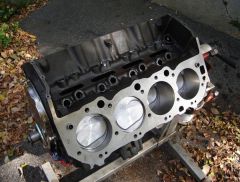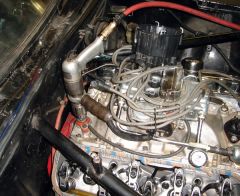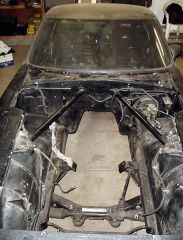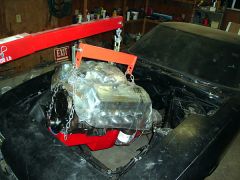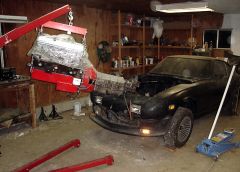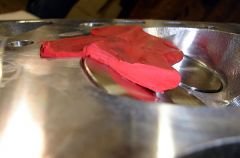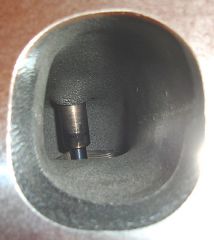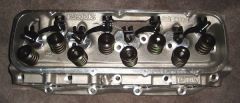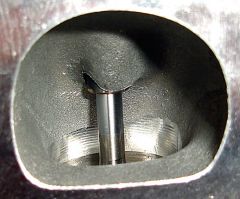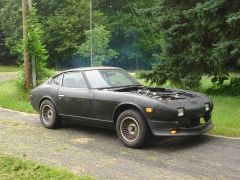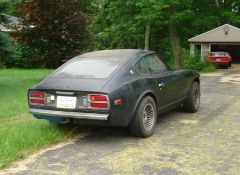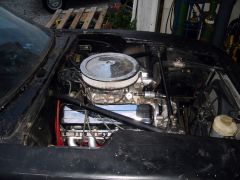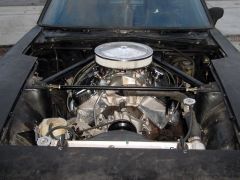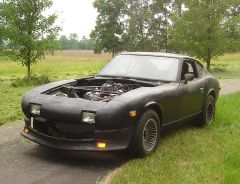-
Posts
825 -
Joined
-
Last visited
-
Days Won
7
Content Type
Profiles
Forums
Blogs
Events
Gallery
Downloads
Store
Everything posted by Michael
-
From the album: engine details and installation
-
From the album: engine details and installation
-
From the album: engine details and installation
-
From the album: engine details and installation
-
From the album: engine details and installation
-
From the album: engine details and installation
-
From the album: engine details and installation
-
From the album: engine details and installation
-
From the album: engine details and installation
-
From the album: engine details and installation
-
BTW, I would like to thank everyone on HybridZ who's helped me along the way - but especially Denny, whose guidance and mentorship has been invaluable. My Z spent the past 4 months in his garage, with me "commuting" to his place every other week or so, for a day's labor. Had I been alone, it would have been 4 years instead of 4 months - if ever.
-
I uploaded some photographs into my album – please have a look. http://album.hybridz.org/showphoto.php?photo=7949&cat=673 Drove the thing again today; added a 1/2-quart of ATF to the crankcase, as some folks have advised. Let the engine warm up. Idle was poor while the engine was cold - probably the choke is malfunctioning. After ~30 seconds of operation, idle became stable at around 800 rpm. By the time operating temperature reached 160 F, idle climbed to 1100 rpm. Unfortunately the electric fan would not come on, so I shut the engine down when it reached 210 degrees - hopefully that wasn't drastically too hot. I'm worried about the rings, whose gap might be too small. Also, on further reflection, I probably overfilled the oil sump by 2 quarts, mindlessly dumping two gallon-bottles of Valvoline, not having realized that a "gallon" of oil can actually be 5 quarts, not 4! (it's an 8-quart-sump). That might explain the blue/beige smoke on start-up - a huge, thick cloud, which thankfully dissipates a minute after start-up. What would be the damage from overfilling by 2 quarts? Burnouts it my driveway were entertaining! With my usual half-throttle, 3500 rpm-redline driving style (launch at idle, upshift at 3000-3500) both tires leave 30' marks before hooking. About the same thing happens in 2nd. Once I tried to back up, but ended up in 4th instead of reverse - and forgot about the parking break. Strangely, it took some gas to get going, and there was hesitation. But off it went, before I realized the situation. Anyway, this all happened before hitting 210 deg F. Setting the valve lash (which was earlier set cold) showed that nearly all rockers were about right, though loose by 0.002 or so. One felt more loose. Hopefully the locknut backed out slightly on that one - and not a cam wipe! Another rocker (#7) had a slight discoloration on its roller, where it contacted the valve stem. Is this a sign of oil starvation, or an incorrect lash, or something else? I'm still too paranoid to drain the oil and cut open the filter - maybe tomorrow night. Now more operation of the engine until the oil change, for sure. One would like to think that these “truck” engines with big bearing races, comparatively loose tolerances, large bolts and thick webbings are robust, even brutal. But going through the saga of a blown-up engine, a rebuilding and now the care and feeding of a fledgling engine strikes me how delicate these things really are! In all of this, the overarching lesson has been the difference between theory and practice. I would think that my grasp of the theory is quite solid, but the actual practice of tuning, adjusting and building – well, that’s very much in its infancy. It is all the more remarkable how so many “shade tree mechanics” manage to keep high performance engines running for thousands of miles, with what at least on first blush appears to be rudimentary regard for details such as cleanliness and holding tolerances. Or is the breezy self-confidence deceptive?
-
From the album: Big Block Z - Summer 2006
-
From the album: Big Block Z - Summer 2006
-
From the album: Big Block Z - Summer 2006
-
From the album: Big Block Z - Summer 2006
-
From the album: Big Block Z - Summer 2006
-
From the album: Big Block Z - Summer 2006
-
Thanks guys!!!! Now here's a question... Last night I finally mustered the courage to look at the oil dipstick. Well, the oil is more or less clear (after a total of about 1/2 hour of engine operation), but has a slight tinge of gray. No metal particles - at least not yet, and not on the dipstick - but definitely something like a fine gray powder. Is this normal? Is this the result of rings lapping themselves into the cylinders? Should I change the oil immediately, or follow the 500-mile rule? Years ago, when I was into R/C model airplanes (2-cycle single-cylinder engines with aluminum head and case, bronze cylinder sleeve and aluminum piston with some form of chrome coating), such gray mist in the oil was indicative of mechanical wear.
-
Well, sort-of first drive – the first since the summer of 2000. The engine needs tuning, the chassis needs tuning, the suspension needs tuning, and the driver needs tuning, but somehow the whole combination held together – at least for a lap around the block. The horror of a potential cam wipe has not entirely dissipated, yet something I feel a tinge of optimism. First impressions… 460 cubic inches pushing a 2600-lb overgeared sheet-metal box really can not be described as driving a car. But I can say – with my usual hedges, disclaimers and qualifiers, that the sensation is not without its satisfactions. It is entirely different from Mike Kelly’s Corvette, or Pete Paraska’s Z, or any other roadgoing vehicle in which I’ve been driver or passenger – which, in a sense, was the original goal… 8 years ago. Now off to the dyno tuning shop – probably via tow truck; one should not push luck too far.
-
In my opinion the whole point of a V8 hybrid is to build a stout engine from a bare-block, with good aftermarket components, custom machining, component matching and porting. The Z becomes a carrying case for the engine. If the engine moves a 3700 lb muscle, it should really move a 2600 lb Z. Use the skills and philosophy that you've developed in your L6 builds - except that now you would have >2X the displacement! A junkyard engine with a swap-meet intake manifold may turn out to be a disappointment, compared to your turbo L6.
-
It sounds like this car would be your daily driver. If so, do please think twice before tackling an engine swap! A hobby-car could be built at your leisure, and with enough deal-making acumen and technical skill, you might indeed be able to meet your goals for price and performance – either with a small block Chevy, or turbo L6, or some other variation. But please, ask yourself again if you wish to encumber yourself with the risk, the hassle and uncertainty of relying on a custom hybrid as your only transportation!
-
One trend that seems to be happening is that that once folks get into the 8’s or even 9’s, a compact “street car†loses its attraction. Further progress becomes increasingly difficult – as either the car becomes unrecognizably different from its origin, or becomes too temperamental and unsafe. In either case, the trend is to move to a dedicated dragster. The formula of light compact street car + huge hi-po engine works great up to a point – but evidently only up to a point. Ron Jones probably reached that point, and chose to go elsewhere to make further progress. Now here’s a question for the cognoscenti: why do so many drag Z’s on racingjunk have Dana 60’s? I would have thought that a 9†or 12-bolt would be the more natural choice.
-

Dyno Tuning: This is why you do it (56k beware)
Michael replied to Drax240z's topic in Fuel Delivery
I’m wondering about the distinction between tuning a modern, fuel-injected, computer-controlled car vs. 1960’s/1970’s-type “technology†(vacuum-secondary carburetor, naturally aspirated, no nitrous, HEI distributor, mechanical fuel pump). Assuming reasonable initial choices for spark plug gap, ignition timing, distributor rotor weights and springs, and fuel jets, what are some of the options available for tuning with the dynamometer? Would a probe with an oxygen sensor be inserted up the exhaust pipe, closing the loop via external diagnostic equipment, where onboard equipment is insufficient? Would a fuel flow-rate gauge be plumbed into the line between the fuel pump and the carb? What about some sort of intake air flow sensor? -
As a point of reference, I just returned from a business trip to England. Over there the gasoline is about 1.0 GBP (British Pound) per liter. At the current exchange rate, that works out to over $7 per gallon! However, in 2003 their gas prices were around $5 per gallon, while ours were at around $1.40. Evidently prices in the US and in Europe went up by nearly the same absolute amount – which means a relatively slight proportional increase for them, but a huge increase for us!

